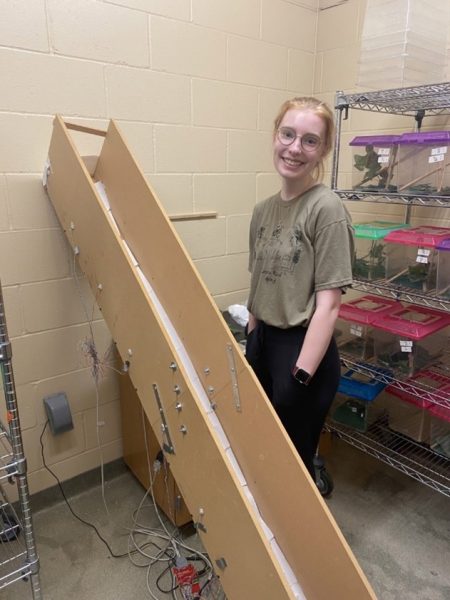I am a Ph.D. candidate in Dr. Simon Lailvaux’s lab at the University of New Orleans. My research focuses on how varying energetic environments affect aspects of green anole (Anolis carolinensis) phenotypes and ultimately their offspring. To tackle my research questions, I used methods such as measuring gene expression of hormones involved in the response to varying environmental pressures. I wanted to expand my ability to identify and measure mechanisms that link the genotype to the phenotype. The Research Coordination Network Lab Exchange program granted me the opportunity to travel to the University of St. Thomas in St. Paul, Minnesota to work with Dr. Jerry Husak. He is currently working on an experiment aimed at linking genotypes to phenotypes in different populations of green anoles across longitudinal and latitudinal gradients. I was excited to work with him because he employs a range of techniques to quantify phenotypic and genotypic variation across green anole populations.
The first new method I learned was how to measure bite force. In figure 1, we have a beautiful example of a male green anole displaying his dewlap. They typically show their dewlap as a first line of defense when another male is encroaching on their territory. If the threat escalates, they may engage in physical combat. Bite force is a key performance trait to measure in these animals. It is directly correlated to other fitness enhancing traits by increasing prey availability or fighting off other males to better their mating opportunities. Behind the green anole in Figure 1 is the instrument used to measure bite force. The animal bites down on the metal plates and their bite force is recorded on an attached device.
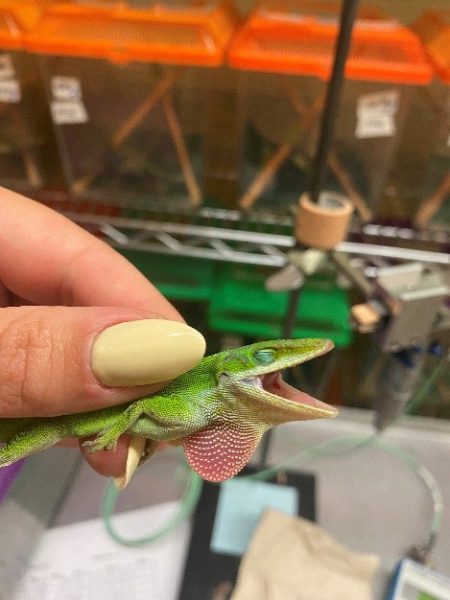
To better understand the variation in phenotypes across populations of green anoles, we measured sleeping metabolic rate (SMR). It is measured at night to understand baseline energy expenditure, which meant that we could not start the experiment until 9:00pm. The late nights at the lab were completely worth it to learn this technique! Shown in Figure 2 is a lizard in one of the metabolic chambers. These chambers were hooked up to tubes and computers that told us average CO2 consumption while the lizard was inside.
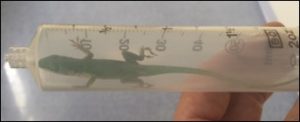
The final skill I learned was how to measure critical thermal minimum (CTmin). Because we compared lizards across a range of latitudes and longitudes, which have varying climates, this measurement provides insight into thermal tolerance of the species and differences in phenotypic plasticity between populations. To perform this, we recorded the lowest temperature a lizard could tolerate before it lost its righting ability. Righting ability refers to the animal being able to flip themselves back over if placed on their back. The lizards were placed in a terrarium that was set on ice (shown in Figure 3a). A temperature probe was placed and we monitored their temperature until they lost their righting ability (shown in Figure 3b). This causes no harm to the lizard! They bounce back immediately when they are removed from the ice.
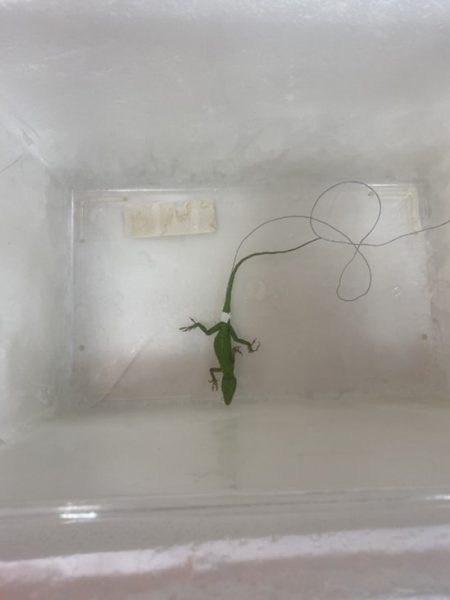
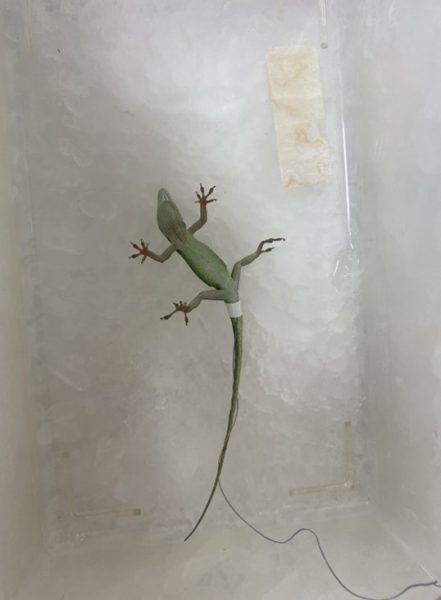
I was able to spend four days working in the Husak lab to learn these techniques. I wanted to give a huge thank you to Maggie Duerwachter! She is going in to her final semester at the University of St. Thomas and she taught me nearly all the skills I outlined in this post. She is featured here in Figure 4 next to a ramp that is used to sprint train the lizards. Maggie and Jerry significantly improved my abilities to quantify phenotypic variation across populations and I look forward to analyzing the data we collected! Thank you to the g2p2pop Research Coordination Network for the opportunity to participate in this lab exchange!
